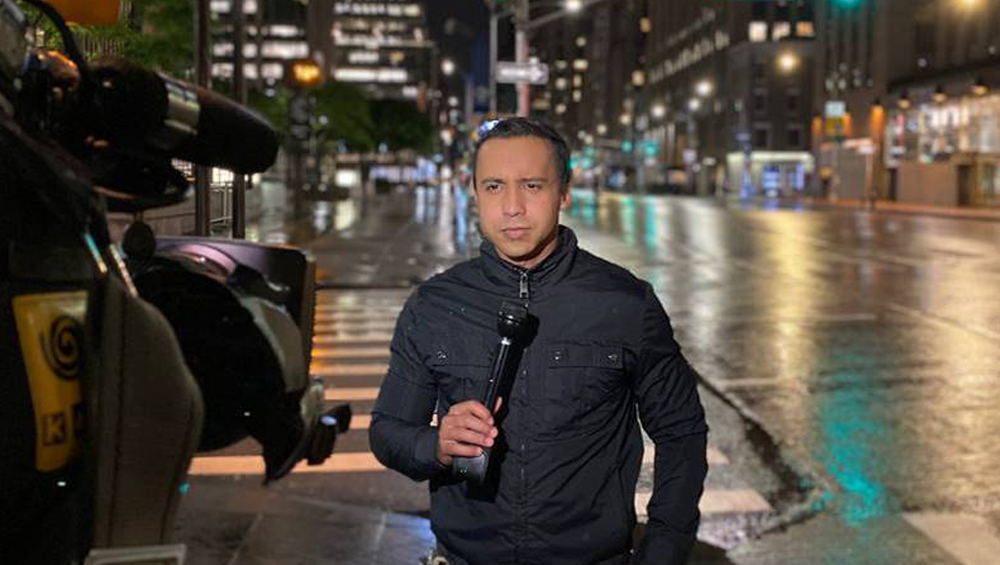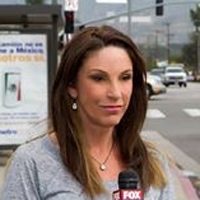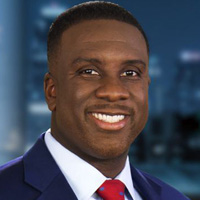
Reporting On Protest | Protest Coverage Requires ‘A Thousand Decisions’

Police, protestors and a pandemic all threaten the safety of journalists covering the Black Lives Matter protests.
Remaining safe while reporting on the protests requires more than masks and situational awareness, journalists said during TVNewsCheck’s Reporting on Protest: Lessons from the Front Lines webinar on June 30.
Christina Gonzalez, reporter for Fox Owned Stations’ KTTV Los Angeles, said covering protests requires experience. “There are reporters who are made for this kind of coverage, and there are reporters who are not.”
She said she seeks the most defensible space she can find, often a tree, when deciding where she’ll cover the protest from.
“If you’re near the truck, you can get in the truck, but protests tend to move,” she said. “You start thinking about this before, not at the last moment.”
Gonzalez said she tends to wear a bandana, as it helps her blend in better than a mask does. She said she will pull the bandana down to provide critical information about things like numbers and locations as long as she is far enough away from others. She said she sounds clearer when using paper masks and bandanas rather than cloth masks.

Christina Gonzalez
Bryan Llenas, Fox News Channel’s national correspondent, said reporters covering a protest are making “a thousand decisions” while they’re out there, including whether to follow a group or stay.
“There’s no training for that,” he said. “It’s incredible how many decisions you have to make, not just for your safety but editorially.”
At the same time, the reporter must remain calm despite surges of adrenalin and let the pictures do the talking, he said.
Before covering a protest, Llenas said he speaks with his camera person and the two security guards assigned to accompany him during protest coverage in New York City. Together, he said, they decide the ground rules and responses to different scenarios.
“I can now concentrate more clearly on reporting. I have extra eyes looking out for me,” Llenas said.
That’s one of the upsides of having security guards who “melt” in well during a protest, he said. The downside, he added, is they can impede mobility due to the increased number of people who have to move from location to location.
In addition, Llenas said, he makes it clear he’s a journalist but he doesn’t flash the Fox logo around protest sites. “Having the logo out there would add accelerant and put a lot of people, including ourselves, at risk,” he said.
Kevin Holmes, an evening anchor and reporter at E.W. Scripps-owned KSHB Kansas City, Mo., said he also removes the mic flag during protest coverage because of the “reverence and repugnance” it can cause.
“We have a mic and camera. They can discern we’re members of media,” but the logo is not necessary, he added.

Kevin Holmes
Holmes said he likes to know the lay of the land ahead of time. The day before the protests, Holmes walked the three blocks from KSHB to J.C. Nichols Park, the location of the protests, so he could assess the scene while not reporting.
“It helped me navigate the waters the next day,” he said.
The park itself is something of a bowl shape, he said, and police released tear gas. “We found ourselves in that bowl, and as tear gas was deployed, we had to find higher ground,” Holmes said. “I was 100 yards away, and my eyes were burning.”
Sarah Matthews, staff attorney with the Reporters Committee for Freedom of the Press, said the danger to journalists covering Black Lives Matter protests is unprecedented, with more than 470 reports of aggression on journalists during those protests. That number includes 62 arrests and 110 physical attacks, of which 65 were by law enforcement, as well as 64 tear gassings, 34 pepper sprayings, 99 rubber bullet or projectiles and 67 instances of equipment damage, according to the US Press Freedom Tracker.
“These are staggering numbers,” she said. For comparison, Matthews said, in all of 2019, there were 152 reports of aggression against journalists and nine arrests.

Sarah Matthews
She urged journalists planning to cover future protests to research riot control tactics common in their area and bring appropriate personal protection equipment, as permitted by police. If police are using rubber bullets, she said, the reporter would need body armor, a helmet and a trauma kit, while a full-face gas mask would be suitable for tear gas scenarios.
Journalists should use the buddy system and maintain situational awareness, she said. Sometimes, she said, police “kettle” protestors, and journalists swept up in the kettle could be held for hours.
Finally, Matthews said, general dispersal orders from the police apply not just to protestors but also to journalists. Journalists can be arrested for failure to obey, although police may permit media to remain on site in a specific location so they do not interfere with police activity, she said.
In addition to that, Gonzalez said, it’s important for journalists to memorize or have written down a phone number for a contact at the station and a family member in case of arrest, as police will take away cell phones.
All in all, the goal is to safely tell the world what’s going on, and Llenas said he strives to give as authentic a view of that as possible in his coverage.
“It’s an enormous moment. It’s about inequality in all its forms,” Llenas said. “There are a lot of black and brown people in this country who just feel fed up.”
Holmes said it’s important for journalists to cover not just what’s happening but why it is happening.
Journalists “tell the first draft of history, and this will go down in the history books,” Holmes said.
Watch the full webinar here.
































Comments (3)
Ted Faraone says:
July 1, 2020 at 8:43 am
It is very sad that accredited journalists need to take emergency measures to protect themselves from police when covering events in public.
tvn-member-7851692 says:
July 1, 2020 at 10:58 am
Mr. Llenas. I think the US has been described as a “melting pot”. Your staff would “meld” in well. Unless they are in hot water.
tvn-member-3011604 says:
July 1, 2020 at 12:54 pm
…and it’s equally sad that the police have to protect themselves from mayors and city council folks who refuse to support them, along with reporters who falsely refer to the protests as “peaceful” even as the protesters destroy police cars and other property.